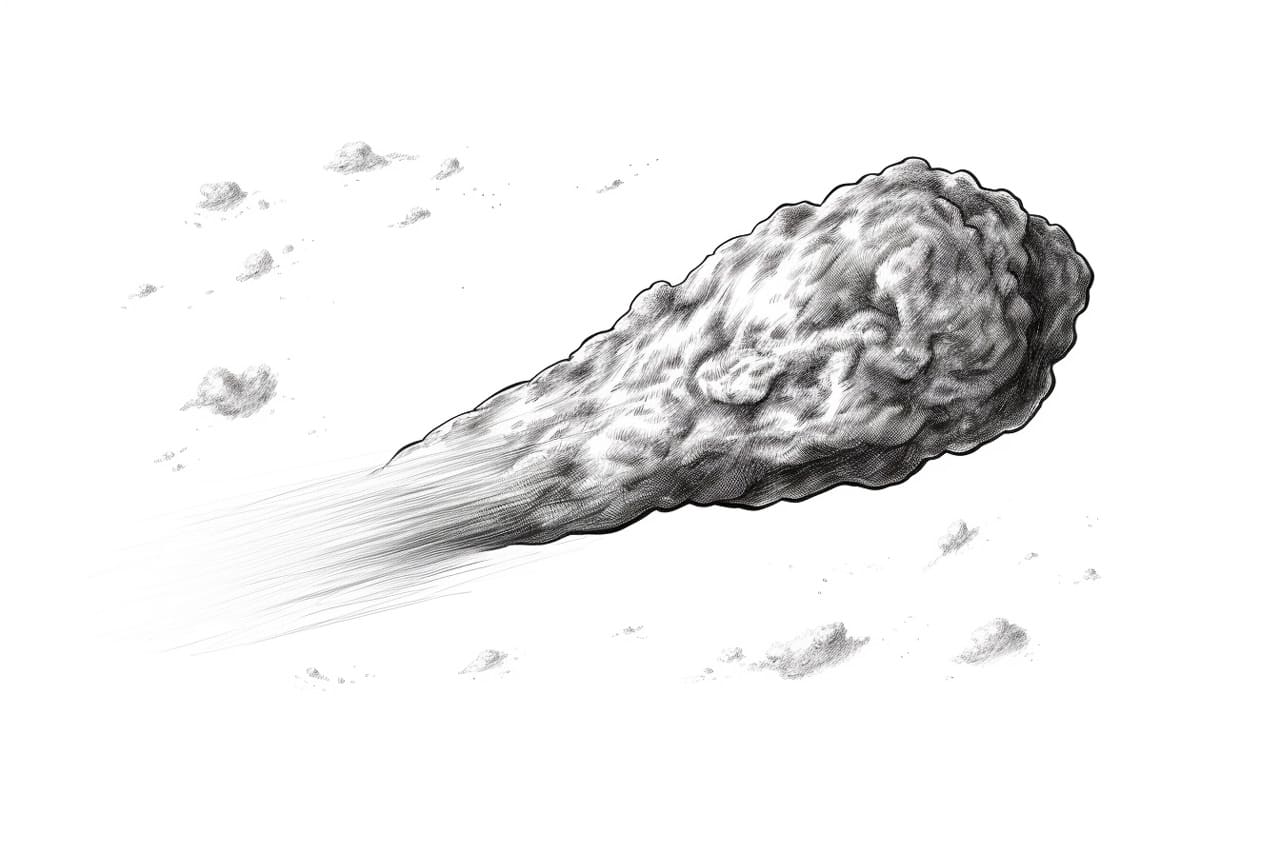Learning how to draw a Comet can be a captivating and rewarding experience, allowing you to capture these celestial wanderers’ mysterious and beautiful nature on paper. Comets offer a unique subject matter for artists looking to explore the universe’s wonders through art, from their dazzling tails to their glowing heads. In this tutorial, we will delve into the techniques and tips for drawing Comet, guiding you to create a stunning and realistic representation of these cosmic travelers. So grab your pencils, paper, and imagination, and let’s embark on a journey to bring the magic of comets to life on the page.
Materials Required
To draw a comet, you will need the following materials:
- Drawing paper or sketchbook
- Pencils (variety of grades for shading and detailing)
- Eraser (preferably a kneaded eraser for easy corrections)
- Blending stumps or q-tips for blending
- Colored pencils or pastels (optional for adding color)
- Reference images of comets for inspiration and accuracy
- Drawing board or table for a stable surface to work on
These materials will help you create a detailed and realistic drawing of a comet. Remember to have fun and experiment with different techniques to achieve the desired effect.:
How to Draw a Comet: a Step-by-step Guide
Step 1: Gather Your Materials
Before starting to draw a comet, make sure you have all the necessary materials handy. You will need a pencil, eraser, paper, and any coloring tools you may want to use.
Step 2: Sketch the Basic Shape
Start by lightly sketching the basic shape of the comet using your pencil. Comets typically have a long tail and a round or oval-shaped nucleus. Remember that comets can vary in shape, so feel free to be creative with your design.
Step 3: Add Details to the Nucleus
Next, add details to the nucleus of the comet. You can include craters, ridges, or any other features you imagine a comet might have. Keep your lines light and loose at this stage, as you can refine them later.
Step 4: Draw the Tail
Extend lines outward from the nucleus to create the tail of the comet. Comets tails are often long and wispy, so use gentle, flowing lines to convey this characteristic. You can make the tail as dramatic or subtle as you like.
Step 5: Refine the Details
Once you are satisfied with the overall shape of your comet, go back and refine the details. Add more definition to the nucleus and tail, paying attention to any textures or patterns you want to include.
Step 6: Erase any Unnecessary Lines
Use your eraser to carefully remove any stray or unnecessary lines from your drawing. This will help clean up your comet and make it look more polished.
Step 7: Add Color (Optional)
If you want to add color to your comet, now is the time to do so. Consider using shades of blue, white, and gray for the nucleus and tail to give it a realistic look. You can also add some yellow or orange hues to create the appearance of glowing gas around the comet.
Step 8: Final Touches
Finally, take a step back and assess your drawing. Make any final adjustments or additions to enhance the overall composition. Add any additional details or shading to make your comet drawing truly stand out.
Step 9: Sign and Date Your Artwork
To complete your drawing, don’t forget to sign and date your artwork. This adds a personal touch and marks the completion of your creative endeavor.
Conclusion
In conclusion, I am incredibly impressed by the beautiful Comet drawing you have created. Your attention to detail and use of shading and perspective truly bring the celestial body to life on paper. Keep exploring your creativity and pushing your artistic boundaries. Remember, every stroke of the pencil is a step towards improvement and growth as an artist. Continue to practice and experiment with different techniques to further enhance your skills. Your passion and dedication to your craft are truly inspiring. Keep up the great work, and never stop creating!
Fun Facts About Comets
- Comets are sometimes called “dirty snowballs” or “icy dirtballs” because they are made up of a mixture of ice, rock, dust, and organic compounds.
- The tails of comets can be incredibly long, stretching for millions of kilometers as they are blown away from the comet’s nucleus by solar wind.
- Comets are thought to be remnants from the early solar system, containing material that dates back to the formation of our solar system over 4.6 billion years ago.
- The famous Halley’s Comet, which is visible from Earth approximately every 76 years, was last seen in 1986 and will next be visible in 2061.
- Comets can have highly elliptical orbits that take them far out into the solar system before swinging back close to the Sun, creating spectacular displays as they heat up and develop tails.
- Some comets have been known to break apart or disintegrate as they approach the Sun, creating multiple fragments or even disappearing entirely.
- The Rosetta spacecraft made history in 2014 by successfully landing a probe on a comet named 67P/Churyumov-Gerasimenko, providing valuable data and images of a comet’s surface.
- Comets are named after their discoverers, with a standard naming convention that includes the discoverer’s last name followed by a number indicating the order in which the comet was discovered in that year.
- Comets played a role in shaping Earth’s early atmosphere and may have delivered water and organic molecules that contributed to the development of life on our planet.
- Scientists study comets to learn more about the early solar system, the composition of icy bodies in space, and the potential threats posed by comets that could impact Earth.
Suggestions for Scenes and Settings for Comet Drawings
Certainly! Here are some suggestions for scenes and settings for drawings of a comet:
- Night sky with a comet streaking across the stars
- Comet soaring above a serene landscape with mountains in the background
- Comet passing through a colorful nebula in space
- Comet approaching a planet with its tail glowing brightly
- Close-up of a comet’s icy surface and glowing tail
- Comet flying through a field of asteroids in space
- Comet illuminating a dark sky over a futuristic cityscape
- Comet reflecting in a calm lake at dusk
- Comet blazing through a star-filled galaxy
- Comet being observed by astronauts from a space station
These suggestions offer a variety of settings and scenarios that can inspire unique and captivating drawings of comets. Feel free to use these ideas as a starting point for your artwork!









